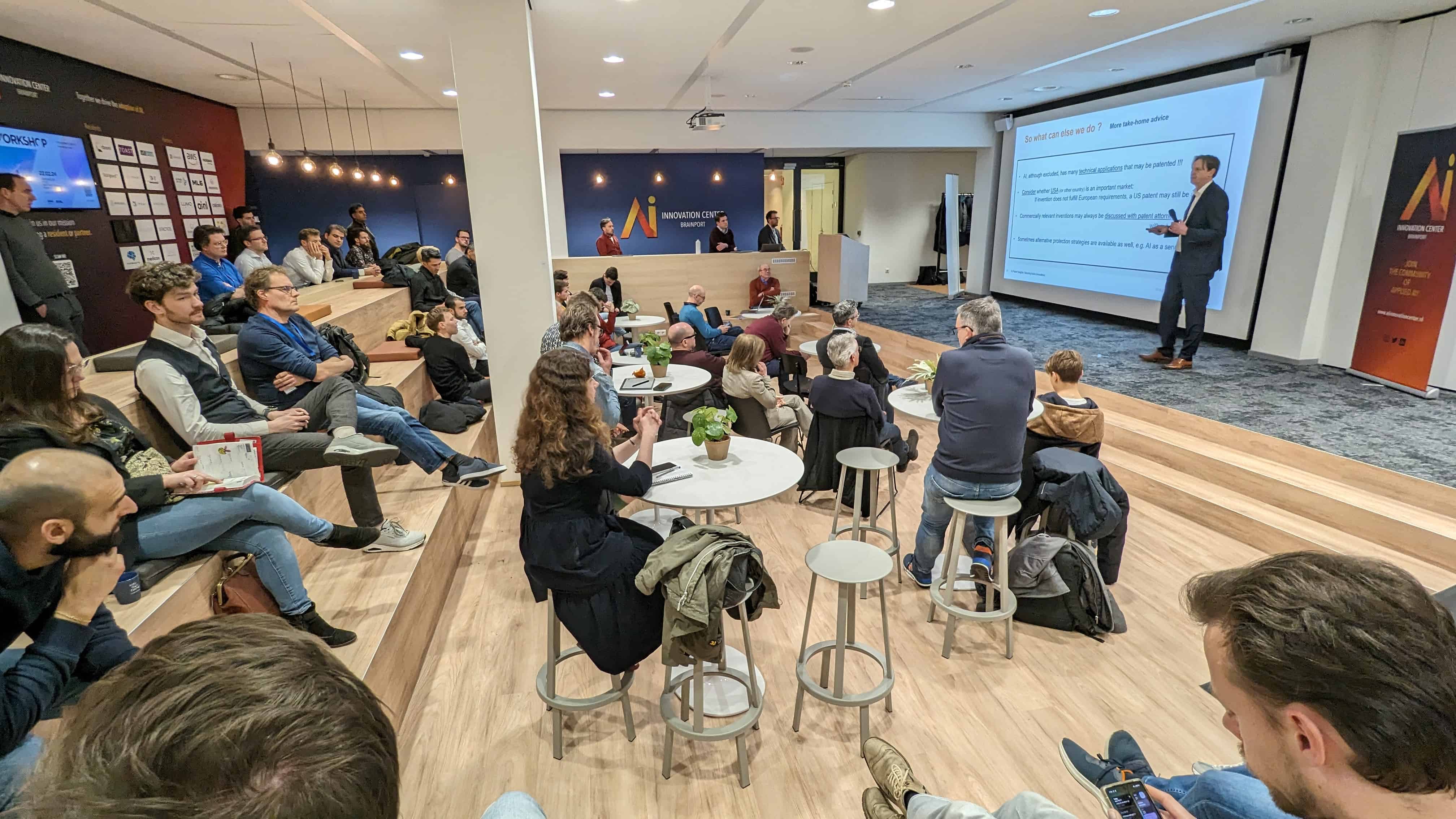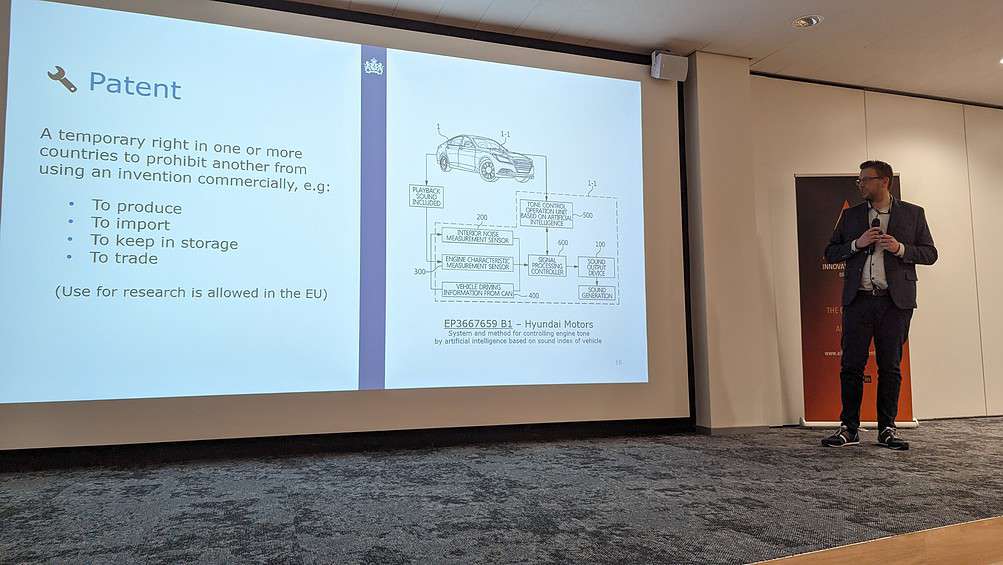
It was a full house for AI Patent Insights: Securing Future Innovations at the AI Innovation Center this week. Bart Jan Niestadt from V.O. Patents & Trademarks and Twan Uijttewaal from Netherlands Enterprise Agency (RVO) came together for a knowledge session on intellectual property with a special emphasis on AI. Today, we dive into Twan Uijttewaal’s talk. Tomorrow, we focus on Bart Jan Niestadt‘s.
Why is this relevant?
For start-ups, intellectual property rights are not usually a top priority. Yet, it can be rewarding to think about them carefully. Twan Uijttewaal of RVO explains why.
In the ever-evolving landscape of technology and innovation, understanding the nuances of Intellectual Property (IP) rights is not just a legal necessity; it’s a strategic business imperative, Uijttewaal explained. As the digital era accelerates, the importance of IP in safeguarding innovations, attracting investments, and maintaining market competitiveness has never been more pronounced.
Why IP matters: beyond legal protection
IP rights serve as the bedrock for fostering innovation and competitiveness. They enable inventors and creators to protect their inventions, brand identities, and creative works from unauthorized use, ensuring their ingenuity is rewarded, and their market position is secured. This protection is about maintaining exclusivity and fueling further innovation and investment in new ideas. For startups and established businesses alike, a robust IP strategy can attract investors by lowering risks and preserving the uniqueness of their products or services.
The spectrum of IP
Understanding the different types of IP rights is crucial for effectively leveraging them. These rights span from patents, which protect technical inventions and are publicly registered, to copyrights and trade secrets, which safeguard creative works and confidential business information without the need for registration.
- Patents are essential for technical innovations, requiring novelty, inventiveness, and applicability. They are particularly vital in industries where technological advancements are rapid and investment-heavy, such as automotive, where a single car can embody numerous patents.
- Trademarks protect brand identity, ensuring consumers can distinguish between the myriad of products and services in the market. This protection extends beyond logos and names to include distinct sounds and colors associated with a brand.
- Design Rights cover the aesthetic aspects of products, including their shape, color, and material. In the realm of technology, this can extend to graphical user interfaces, offering protection for distinctive user experiences.
- Copyrights automatically protect original creative works, ranging from literature to software code, emphasizing the creator’s originality and personal touch.
- Trade Secrets occupy a unique position, protecting valuable business information that gives a company a competitive edge. While not formally registered, maintaining their confidentiality is crucial for their continued protection.
In some cases, Uijttewaal says, trade secrets might be more beneficial to you because you can keep it your ideas a secret for a lot longer. “And if you still opt for a patent, it’s good to consider that if a party would look at your patent publication and start applying that in their own product or service, would you be able to actually find out that they used your technology, that they learned from the patent?”

IP strategy: a business imperative
Incorporating IP considerations into business strategy is not merely a legal exercise but a fundamental aspect of competitive positioning and innovation management. This involves securing IP rights and understanding the landscape in which a business operates. For example, the European Patent Office’s Espacenet offers information on existing patents, providing insights into emerging technologies, potential competitors, and collaboration opportunities.
Uijttewaal advises innovators to take a good look at all the patents on Espacenet. “You see clear trends, the industries or areas that move faster than others. You can use it to get a lot of information. To identify new developments before they hit the market, for example. Or maybe you had a roadblock in your development, and you think, well, maybe somebody else solved this problem for me. You might find the technical details in the patent publication. And you might even be able to identify competitors or potential partners to work with.”

IP Awareness and Education: A Path Forward
RVO’s commitment to IP education and awareness highlights the importance of informed IP strategies for entrepreneurs, Uijttewaal said. “By understanding the different forms of IP, their implications, and how to protect them, innovators can secure their inventions, creative works, and brand identities. This not only safeguards their own interests but also contributes to a vibrant ecosystem of innovation and competition.”
Wrapping up the elements around IP, Uijttewaal says, “It has to make sense for your business strategy whether or not patents are helpful. So, you have to think about the patenting intensity in different technical fields. Are your competitors active? Do you maybe need it to attract investors, or do some investors even require it? That’s a thing that we hear pretty commonly. And in the end, it is an investment both in time and money. And you must always ask yourself: will this patent pay itself back?”
Here’s part 2 of this short series.
Do you want to know more? You can email RVO at [email protected] or visit the patent office’s website: About the Netherlands Patent Office (rvo.nl)







